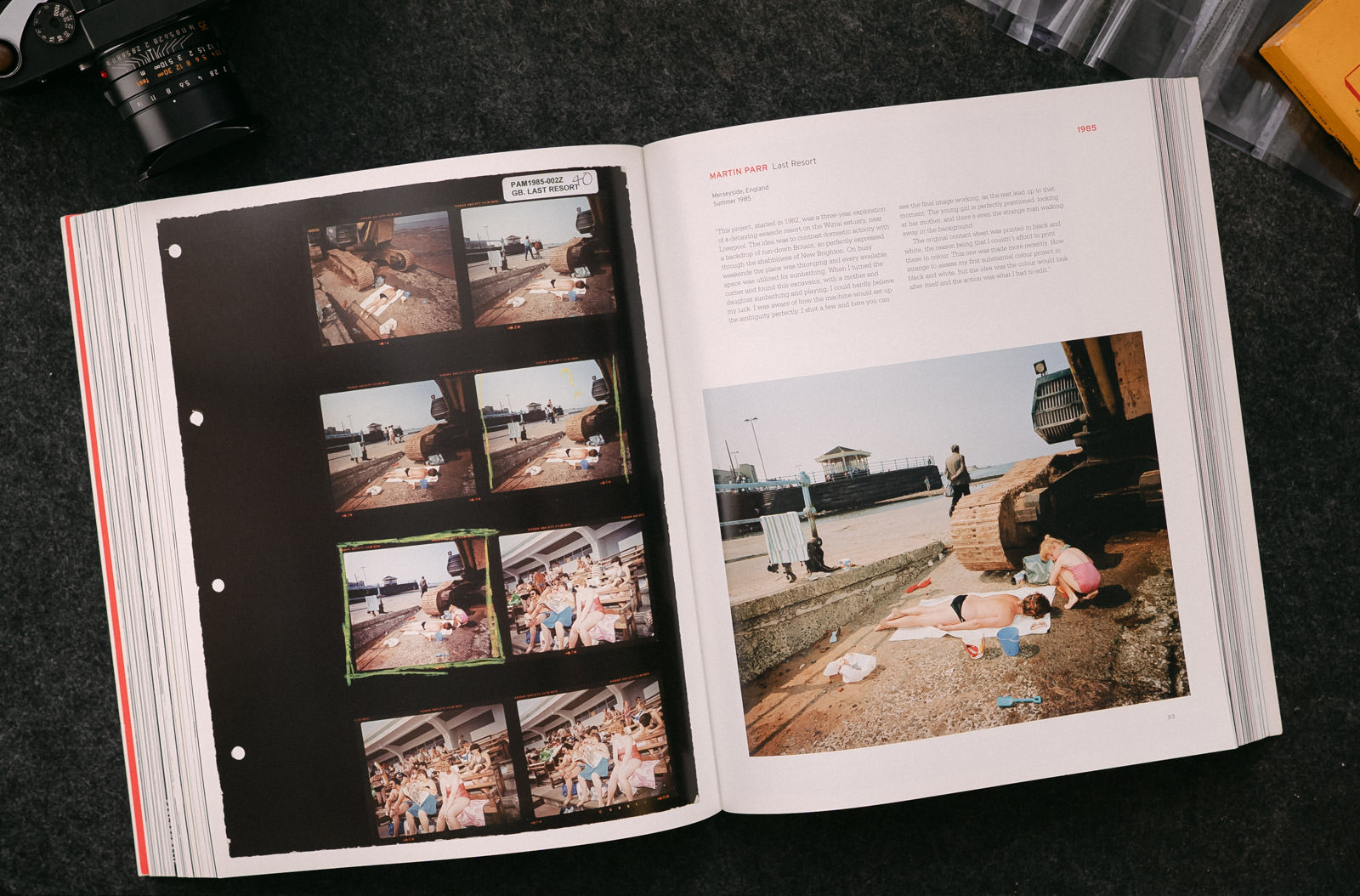Four of my favourite photo books on my shelf
As much as I love looking at photography online, in most genres of photography, places like Instagram can quickly overwhelm me with so many images that it can become repetitive and create a feeling that I need to compare or imitate. Nothing compares to holding a photo book in your hands. Turning pages forces you to slow down, to see images in sequence, to understand the rhythm of a photographer’s storytelling, and, of course, you’re seeing the images on a larger scale than your phone, which often opens you up to realising a lot more is going on in the frame.
I bought my first photobook back when I was a student in 1990. In Our Time: The World Seen By Magnum Photographers opened my eyes to documentary and street photography, and was my inspiration during a two-year photography course here in South Wales.
My collection isn’t huge, but it has slowly grown over the last decade. More recently, I have enjoyed collecting street photography Zines. These are a lot more affordable and can give insight into more contemporary street photographers who may not have a body of work they feel is ready for a book yet. I’ve also self-published a couple of zines myself, which has been an interesting and enjoyable journey. I’ve had a lot of images published in national newspapers and magazines over the last couple of decades, but self-publishing a story or collection feels like a bigger achievement, even if only a few mates and my mum see it.
There are a few books I return to again and again; each one has its own style and reasons I reach for it when I need inspiration.
Here are four of my favourites.
Magnum – Contact Sheets
This book is a must for any photographer. Seeing the frames leading up to and following an iconic image is both humbling and inspiring. It strips away the myth of the “one perfect shot” and shows the reality of trial, error, and instinct. For me, it’s a reminder that shooting through the moment and working the scene can often lead to something unexpected.
The example I’ve picked is from Martin Parr, from his book Last Resort and shows how he first saw this famous scene, then persevered with it until the right frame came together.


Raymond Depardon – Glasgow
Depardon’s Glasgow hits me with its atmosphere every time. Shot in the 1980s, it’s a tough, gritty look at the city, but one that still finds moments of tenderness and humanity. The way he balances stark realism with quiet observation is something I will always aspire to in my own work. It’s also a great example of how you don’t always need to be close to a human subject and can very effectively use the landscape to tell the bigger story. Sometimes I’ll look through this book before heading out with my camera into my local town, which can feel very empty and devoid of life.


Reuben Radding – Heavenly Arms
A more recent addition to my collection. Reuben Radding’s photographs capture New York’s street life in a raw and often surprising way, sometimes asking more questions than they answer. The book is a collection of 10 years’ work. Since the pandemic, he has released a series of zines, which I’ve not managed to obtain, but I jumped at the chance to get a copy of this book. The scenes that unfold in front of him seem extremely normal, and yet he finds something beautiful or poetic in each one. I’ve been following his work for a few years, and I’m very inspired by his ethos on photography. He’s very engaging to listen to and has featured on many photography podcasts that are well worth seeking out.


Chris Killip – 1946–2020
Chris Killip’s work has intrigued me for a long time. But this retrospective feels particularly special. His photographs of working-class communities in the North of England carry such honesty and respect. There’s no romanticising or detachment — just deep empathy. Every time I open this book I’m reminded of the power of staying close to your subjects and telling their story with integrity. It blows me away that so much of his work was taken with large and medium format cameras. The time and patience in his composition and exposure are truly inspiring.


My Thoughts
Photo books like these are more than just collections of images; they’re lessons in storytelling, patience, and connection. In an age of fast-scrolling and instant likes, they remind me to slow down and to value depth over immediacy.
Some resources and inspiration if you’re interested in exploring more photobooks.
Patrick Stevens previews hundreds of books in his Instagram reels.
https://www.instagram.com/alwayschasingdaylight?igsh=NGxmZGI5cDF1em13

Leave a Reply